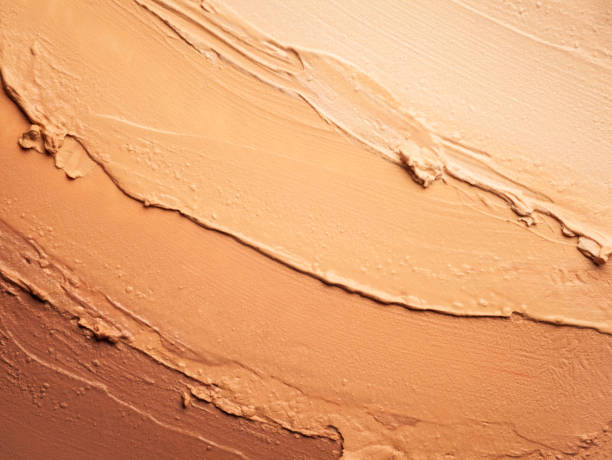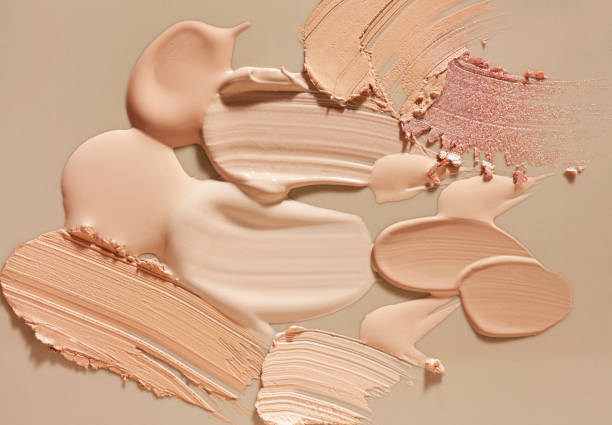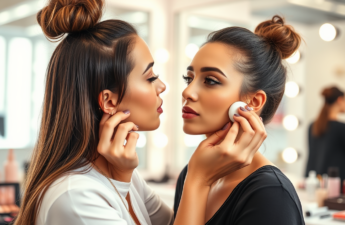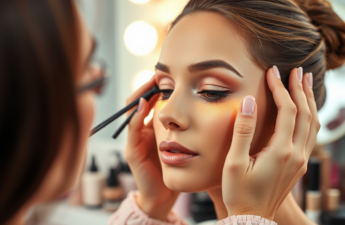Choosing the right foundation color can be a challenging task, but it is essential for achieving a flawless and natural-looking complexion. The right shade will seamlessly blend with your skin tone, masking imperfections without creating an unnatural contrast. This article aims to guide you through the process of selecting the perfect foundation color for your unique skin tone.
Understanding Your Skin Tone

Before you can choose the right foundation, you need to understand your skin tone. Skin tones generally fall into three categories: warm, cool, and neutral. Warm tones have yellow, golden, or peachy undertones, cool tones have pink, red, or blue undertones, and neutral tones possess a balanced mixture of both.
Identifying your specific undertone is crucial. To do this, examine your veins. If your veins appear greenish, you likely have a warm undertone. If they seem bluish or purplish, your undertone is cool. If you can’t decide or they appear a mix of both, you probably have a neutral undertone.
Selecting The Right Shade
Once you know your undertone, selecting the right foundation shade becomes much easier. Testing shades directly on your skin is the best way to find a match. When you visit a store, apply a small amount of foundation to your jawline and check it in natural light. The perfect shade will disappear into your skin without leaving any visible lines.
It may also be helpful to test a few shades next to each other to see which one blends the best. Remember that your skin may change color slightly with the seasons, so you might need different shades for summer and winter.
Choosing The Right Formula
Foundation comes in various formulas such as liquid, powder, and cream. Your skin type will determine which formula works best for you. If you have oily skin, opt for a mattifying powder foundation to control shine. For dry skin, a hydrating liquid or cream foundation will provide moisture and prevent flakiness.
Combination skin types can benefit from a balanced formula that offers hydration without being overly oily. Be sure to read product labels and select foundations with ingredients that cater to your specific skin needs.
Tools And Techniques For Application
Even with the perfect foundation color and formula, the application technique is crucial for achieving a flawless finish. Tools such as brushes, sponges, and fingers can all be used based on your preference. Sponges, especially beauty blenders, are excellent for building coverage and creating a seamless finish.
Brushes can offer more precision and are great for reaching smaller areas of your face. Using your fingers can warm up the product and allow it to blend more naturally with your skin. Experiment with different tools to find what works best for you.
Maintaining Your Foundation Throughout The Day
To ensure your foundation lasts all day, start with a primer to create a smooth base. After applying your foundation, set it with a translucent powder to lock everything in place. A setting spray can also keep your makeup looking fresh and hydrated.
Carry a compact powder for touch-ups throughout the day, especially around oily areas such as the T-zone. Regularly blotting excess oil also helps maintain your foundation’s appearance without adding extra layers of product.
Conclusion
Choosing the right foundation color is essential for achieving a natural, flawless complexion. By understanding your skin tone and undertones, testing shades in natural light, selecting the appropriate formula, and mastering application techniques, you can find the perfect match. Additionally, maintaining your foundation throughout the day with the right products ensures that your makeup looks fresh and flawless from morning to night. Follow these guidelines to achieve a radiant and seamless look.
FAQ
1. How do I know if I have a warm or cool undertone?
Look at the veins on your wrist. If they appear green, you have a warm undertone. If they look blue or purple, you have a cool undertone. If you can’t decide, you may have a neutral undertone.
2. What’s the best way to test foundation shades?
The best way to test foundation shades is by applying a small amount to your jawline and checking it in natural light. The shade that blends seamlessly with your skin is the right match.
3. Can I use a different foundation formula if my skin type changes?
Yes, it’s important to switch your foundation formula if your skin type changes. For instance, use a hydrating formula during dry seasons and a mattifying one during humid conditions.
4. How can I make my foundation last longer?
Start with a primer, set your foundation with translucent powder, and finish with a setting spray. Carry a compact powder for touch-ups and blot excess oil throughout the day.
5. Is it necessary to own multiple foundation shades?
It’s a good idea to have multiple foundation shades, especially if your skin tone changes with the seasons. Having a lighter shade for winter and a darker one for summer can help maintain a consistent look.



